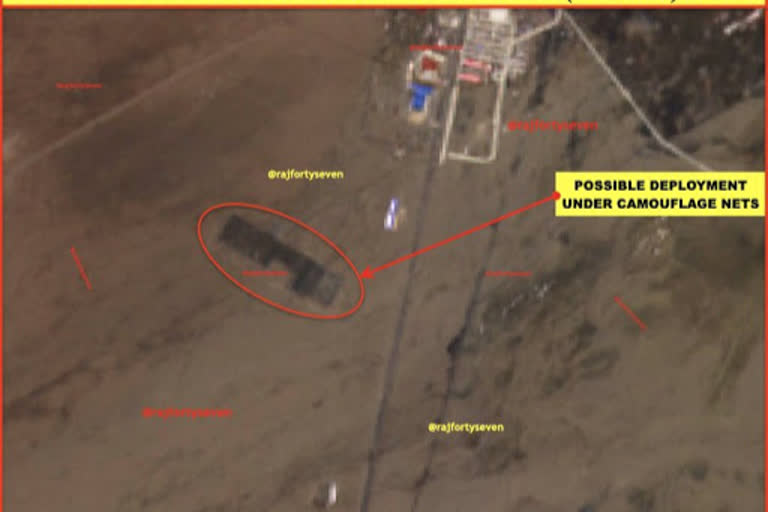Srinagar: The Indian Air Force fighter jets on Wednesday took to the air following a fierce face-off between Indian and Chinese troops at Pangong Tso lake in Ladakh.
Even a week after the incident that took place May 5-6 night at Finger 5 on the lake's northern bank, the troops of both the Armies are kept on the high-alert.
According to the officials, the area is under the watch and manned by the Indian army's infantry battalion but more personnel have been called in for any contingency situation.
"Two Su-30MKI of the IAF were rushed to the Finger 3 along Line of Actual Control (LAC) for routine training flying. There was no airspace violation by either side," a senior Indian Air Force official told ETV Bharat without divulging any further details.
Under the existing arrangement between India and China, no fighter aircraft can come within 10 km of the LAC without prior intimation to either side. For helicopters, the distance to be maintained from the LAC is 1 km.
However, Indian Army maintained that there is no build-up in the zone.
"There is no continuing faceoff at Pangong Tso. There is no build-up of armed troops in the area," Colonel Aman Anand, an Army Spokesperson based in New Delhi told ETV Bharat.
He further said: "Incidents of faceoff and aggressive behaviour occur on LAC. Patrols disengage after local-level interaction and dialogue. Temporary and short duration faceoffs occur as the boundary is not resolved. Troops resolve such incidents mutually as per established protocols."
Giving details regarding the May 5 faceoff, Col Anand said, "PLA troops tried to physically stop Indian patrols beyond Finger 2. For the Indian side, Finger 1 acts as a bottleneck and they patrol on foot beyond that point. After the Chinese attempted to restrain Indian patrols, the Indians responded by asserting their claim with PLA patrols which led to tensions between the two sides."
Meanwhile, China has inducted fresh PLA troops into Sharsingma in Yatong area of Tibet very close to India's Sikkim border.
Also read: Vocalists, musicians, bards unite to celebrate Earth amid corona crisis
"There might be an increase in such incidents in the future but the troops can very well mutually resolve the issues as per established protocols. The satellite imagery of May 9 PLA troops and vehicles under camouflage in Yatong near Sikkim border. We are dealing with the situation as per the protocols," he said.
Interestingly, six years ago, China had tried to undertake construction at Finger 4 but following India's aggression, the PLA eventually vacated the area. Then on August 15, 2017, the same area witnessed fistfight and stone-throwing between Indian and Chinese patrols, at that time, the two armies were locked in a tense face-off in Doklam.
In the recent incident, at least two senior officers of the Indian Army were among the dozens injured in assaults by Chinese troops using bats, batons with nails, and metal rods. Indian soldiers retaliated, leaving many Chinese soldiers injured.
Earlier, an Indian Army helicopter carrying a senior officer came in close vicinity of two Chinese military helicopters in the area. After the incident, two Su-30MKI jets from the Leh airbase were rushed to the area.
According to the officials, the 45-km long western portion of the Pangong Tso lake is under Indian control and the rest under Chinese control.
"The mountains on the lake's northern bank jut forward in major spurs, which the Army calls fingers. India claims that the LAC is co-terminus with Finger 8, but it physically controls area only up to Finger 4. Chinese border posts are at Finger 8, while Indian border posts are located close to Finger 3. The Chinese claim that the LAC passes through Finger 2. The area between the two differing perceptions is the disputed territory which both armies try to dominate through regular patrolling," Col Anand said.



